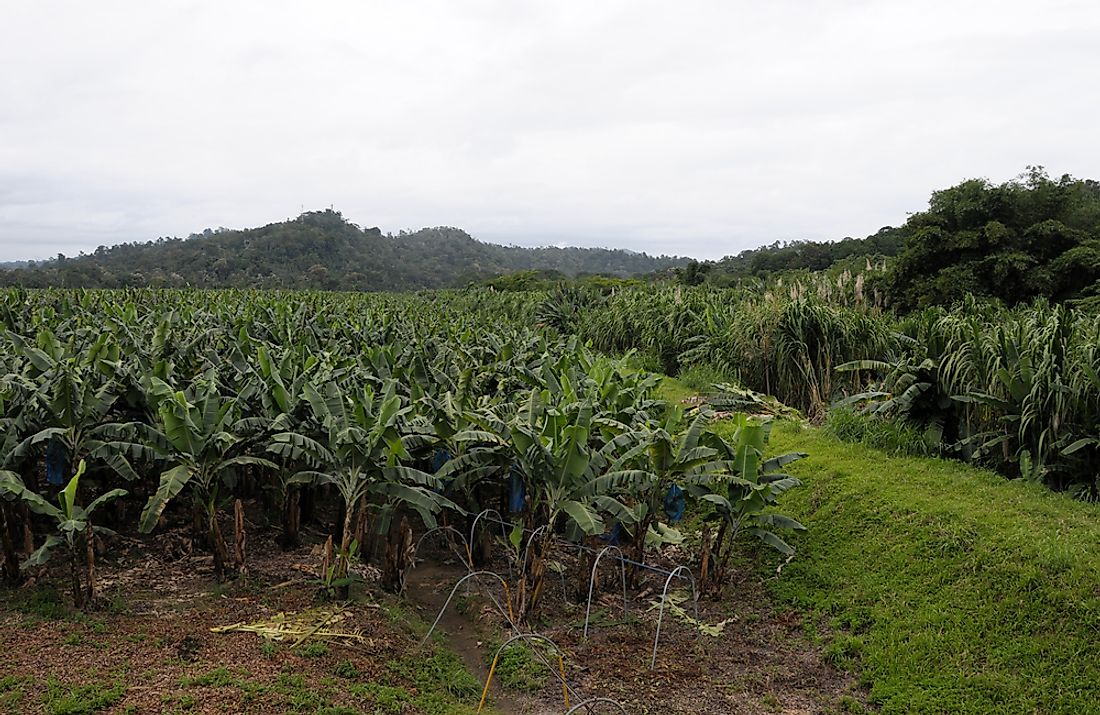What Are The Biggest Industries In Costa Rica?

Costa Rica is a sovereign state found in Central America. It shares its borders with Nicaragua, Panama, Ecuador, and Cocos Island. The country also has a coastline running along the Pacific Ocean and the Caribbean Sea. Costa Rica spends approximately 6.9% of its total budget on education in comparison to the world average of 4.4%. The economy of Costa Rica is heavily reliant on agriculture and tourism. In 2010, the country had a GDP of $21.17 billion and the growth rate of real GDP in the same year was 4.2%. The same year, the GDP per capita was approximately $11,300.
Tourism Industry
The tourism industry has experienced the fastest growth in the country, and in 1995 it had become the country’s biggest earner of foreign exchange. As of 1999, earnings from tourism overtook the revenues from exports of the top three most important crops, which include coffee, pineapples, and bananas.
Tourism in the country began to boom in the early 1980s, and the tourists arriving in Costa Rica increased sharply to over 1 million visitors in 1999 from about 300,000 in 1988. By 2008, more than two million tourists arrived in the country, and in 2015 it reached the highest levels of 2.7 million visitors. As of 2012 tourism in the country accounted for about 12.5% of Costa Rica’s GDP and employed about 11.7% of the country's labor force. In 2009 the industry was responsible for an estimated 17% of the country's foreign direct investments in the country. From 2000 to 2009 the country was attracting an average of 13% of foreign direct investment inflows, while in 2010 it accounted for about 21.2% of all foreign exchange earnings generated by exports. According to the estimates by the government, tourism was responsible for reducing poverty by as much as 3% in 2007.
Costa Rica is rich in diverse flora and fauna which accounts for about 5% of the biodiversity in the world, even though its land area is only about 0.03% of the total world landmass.
Agriculture Industry
Agriculture is one of the major industries and plays a significant part in the country's economy accounting for approximately 6.5% of the country's total GDP and employs about 14% of Costa Rica’s labor force. Agriculture is carried out in almost all parts of the country, but the crops and the techniques used in cultivation vary depending on altitude and location. Some of the major agricultural export items include coffee, pineapples, bananas, potatoes, sugar, fruits, vegetables, rice, corn, and ornamental plants. About 10% of the land is used for agriculture, and 21% of the country's area is used irrigation particularly with the use of surface water.
Manufacturing Industry
The manufacturing industry in the country consists of electronics, plastics, textiles, machinery, chemicals, and assembly plants. Until recently, the majority of the sectors were made up of mainly small-scale and light manufacturing industries. In 1998 the first large-scale undertaking in manufacturing was established when Intel Corporation set up base in the country, and several companies in the recent past have established plants. Intel set up a plant which employed about 1,500 employees. Currently, most investments in electronic manufacturing in the country originated from the US, but there are also other companies from Germany such as Zollner Elektronik AG. The company is among the world’s 15 largest electronic manufacturing concerns, and the company has made Costa Rica as one of its manufacturing locations because of the political and economic stability in the country as well as the education system and the manufacturing resources.
Other plants found in the country manufacture cheese, alcohol, cigarettes, Coffee Mills, sawmills, sugar factories, and petroleum refinery facility, which is owned by the government. There are also factories which manufacture plastic, pharmaceuticals, textiles, chemicals, furniture, paper, and shoes among other items. Most of the Industries are in the capital city of San Jose. Other cities with a significant number of manufacturing concerns include Alajuela, Cartago, and Heredia. According to the government of Costa Rica, 24% of all industries are engaged in food processing, tobacco, and drinks, while 14% are involved in producing leather products or textiles.











